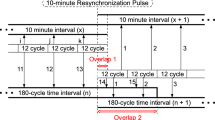Abstract
Wave-pipelining enables a digital circuit to be operated at a higher frequency. In the literature, only trial-and-error and manual procedures are adopted for the choice of the optimum value of clock frequency and clock skew between the input and output registers of wave-pipelined circuits. One of the major contributions of this paper is the proposal for automating the above procedure. A second contribution is the study of how logic depths determine the superiority of wave-pipelining over pipelining with regard to power dissipation. For the study and implementation of wave-pipelined circuits, filters using the distributed arithmetic algorithm are considered. In this paper, two automation schemes are proposed for the implementation of the wave-pipelined filters on both Xilinx and Altera field programmable gate arrays (FPGAs). In the first scheme, a self-tuning finite state machine (FSM) is used to choose the clock skew and clock period for I/O registers between the wave-pipelined blocks. In the second approach, an on-chip soft-core processor is used to choose the clock skew and clock period. To test the efficacy of the schemes proposed, filters with different taps are implemented using three schemes: synchronous pipelining, sub-optimal wave-pipelining and no pipelining (i.e. using neither synchronous pipelining nor wave-pipelining). From the implementation results, it is observed that wave-pipelined distributed arithmetic (DA) filters are faster by a factor of 1.31–1.61 compared to non-pipelined DA filters. The synchronous pipelined DA filters are in turn faster by a factor of 1.73–3.27 compared to the wave-pipelined DA filters. The increased speeds are achieved in the pipelined filters at the cost of an increase in the number of slices by 15–33% and in the number of registers by 350–530%. To compare the power dissipation, both pipelined and wave-pipelined DA filters are tested by operating them at the same frequency. For medium logic depths, the wave-pipelined DA filters dissipate less power than pipelined filters.
Similar content being viewed by others
References
Altera documentation library-2003, Altera Corporation, San Jose, CA, USA.
A. Amira, A. Bouridane, P. Milligan, M. Roula, Novel FPGA implementations of Walsh-Hadamard transforms for signal processing, IEE Proceedings Vision, Image and Signal Processing, vol. 148, pp. 377–383, Dec. 2001.
E.I. Boemo, S. Lopez-Buedo, J.M. Meneses, Wave-pipelines via look-up tables, IEEE International Symposium on Circuits and Systems ISCAS ’96, vol. 4, pp. 185–188, 1996.
W.P Burleson, M. Ciesielski, F. Klass, W. Liu, Wave-pipelining: A tutorial and research survey, IEEE Transactions on VLSI Systems, vol. 6, number 3, pp. 464–473, Sept. 1998.
C. Gray, W. Liu, R. Cavin, Wave-pipelining: Theory and Implementation. Kluwer Academic Publishers, Dordrecht, 1993.
B. Hedayati, The new era of programmable systems, Xcell Journal 2002, issue 42, pp. 7–9, 2002.
G. Lakshminarayanan, B. Venkataramani, Optimization techniques for FPGA based wave-pipelined DSP blocks, Proc. of IEEE Transactions on Very Large Scale Integration (VLSI) Systems, vol. 13, number 7, pp. 783–793, July 2005.
G. Lakshminarayanan, B. Venkataramani, M. Yousuff Shariff, T. Rajavelu, M. Ramesh, Self tuning circuit for FPGA based wave-pipelined multipliers, Proc. of VLSI Design & Test Workshop VDAT04, pp. 93–101, August 2004, Mysore, India.
K.K. Parhi, VLSI Digital Processing Systems: Design and Implementation. John Wiley & Sons, New York, 1999.
G. Seetharaman, B. Venkataramani, G. Lakshminarayanan, Design and FPGA implementation of wave-pipelined lifting scheme for two level 2D-DWT, WSEAS Transactions on Circuits & Systems, Oct. 2005, issue 10, vol. 4, pp. 1284–1291.
M.J.S. Smith, Application Specific Integrated Circuits. Pearson Education Asia Pvt. Ltd., Singapore, 2003.
Yu. Sungwook, E.E. Swartziander, DCT implementation with distributed arithmetic, IEEE Transactions on Computers, vol. 50, pp. 985–991, Sept. 2001.
W. Tuttlebee, Software Defined Radio: Base Band Technology for 3G. Wiley, New York, 2004.
Author information
Authors and Affiliations
Corresponding author
Additional information
This work is carried out with the funding received from the Department of Information Technology, Ministry of information and Telecommunication, New Delhi, India.
Rights and permissions
About this article
Cite this article
Seetharaman, G., Venkataramani, B. & Lakshminarayanan, G. Design and FPGA Implementation of Self-Tuned Wave-Pipelined Filters with Distributed Arithmetic Algorithm. Circuits Syst Signal Process 27, 261–276 (2008). https://doi.org/10.1007/s00034-008-9033-z
Received:
Revised:
Published:
Issue Date:
DOI: https://doi.org/10.1007/s00034-008-9033-z




